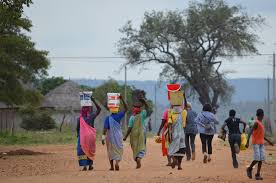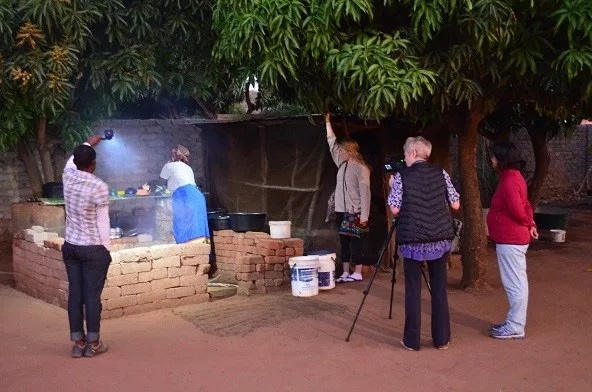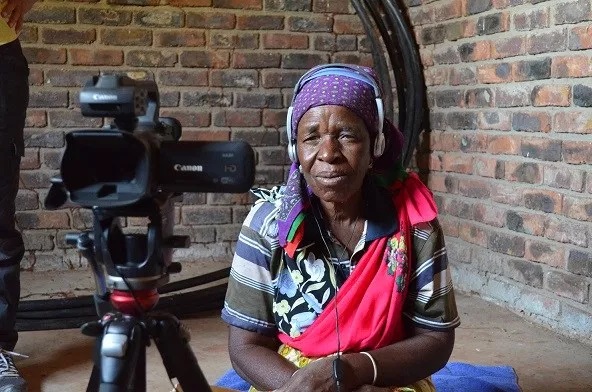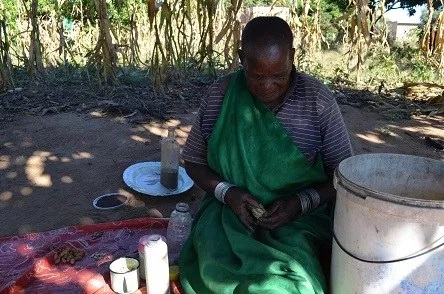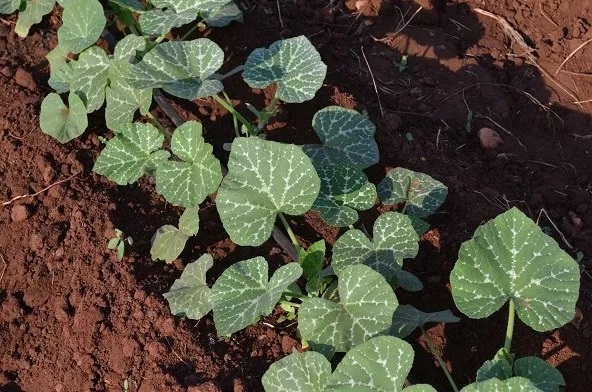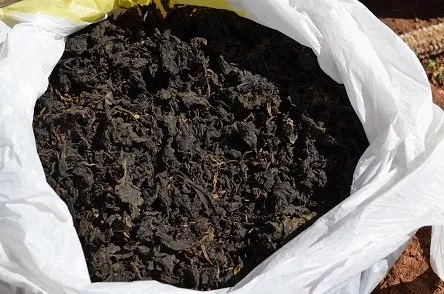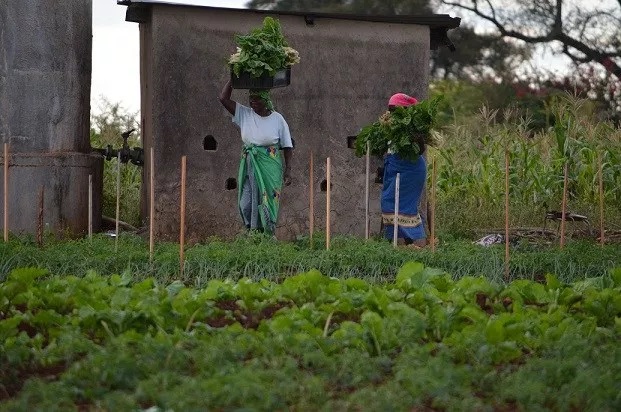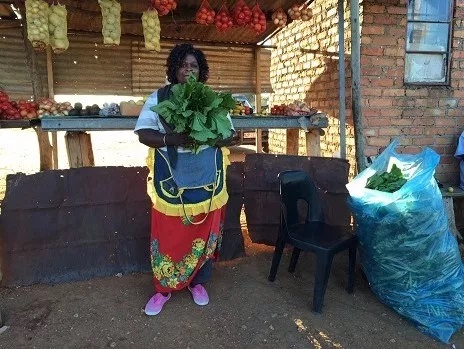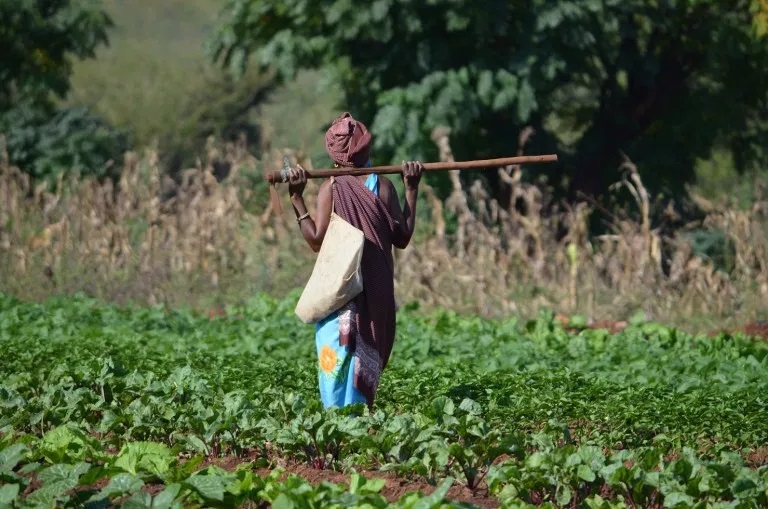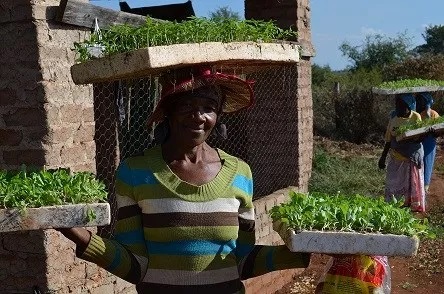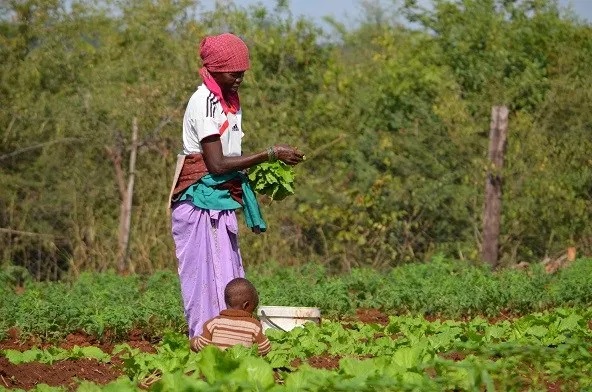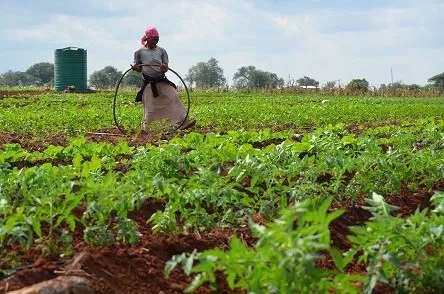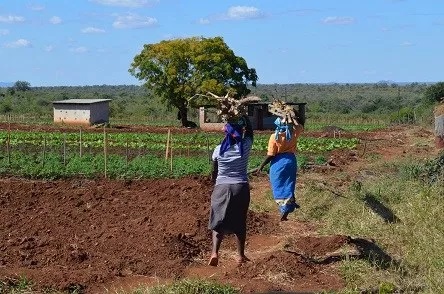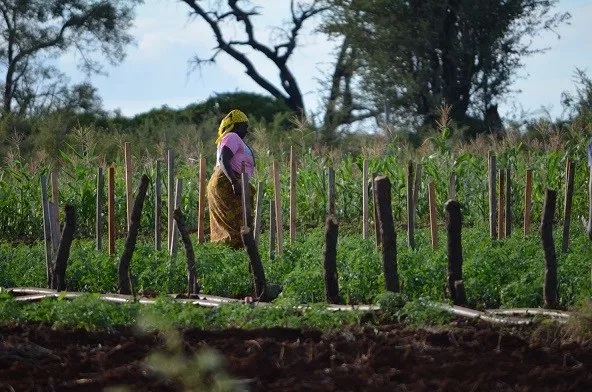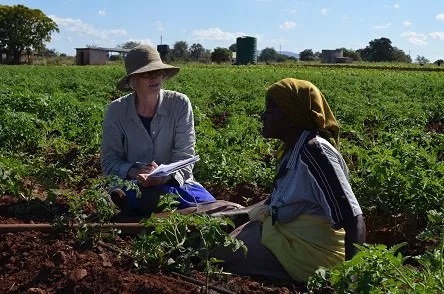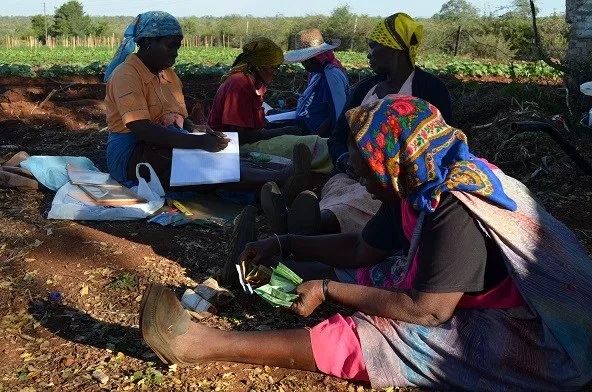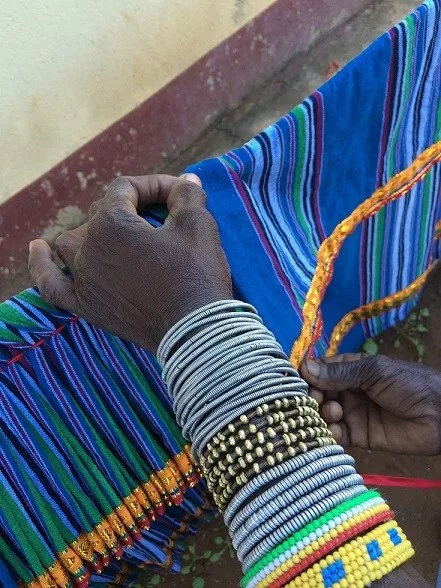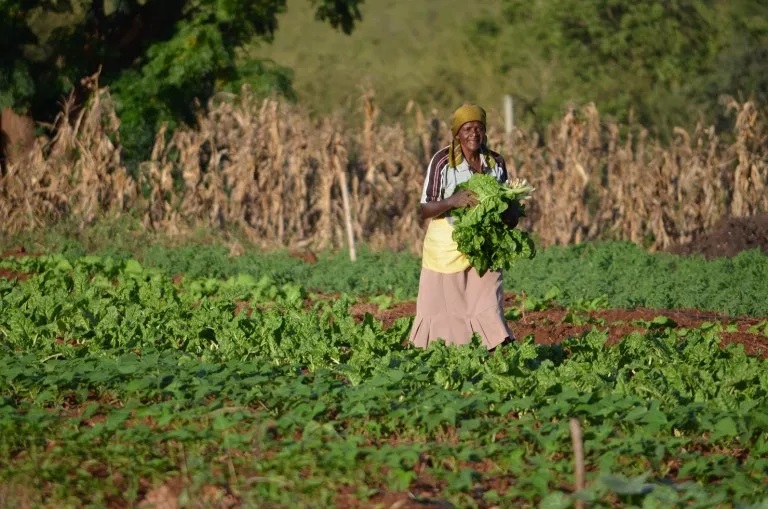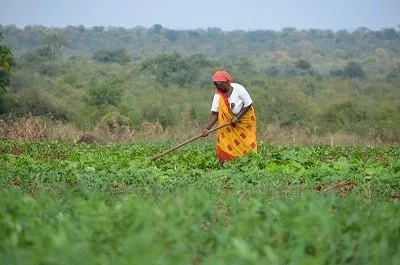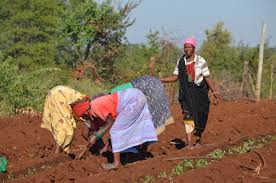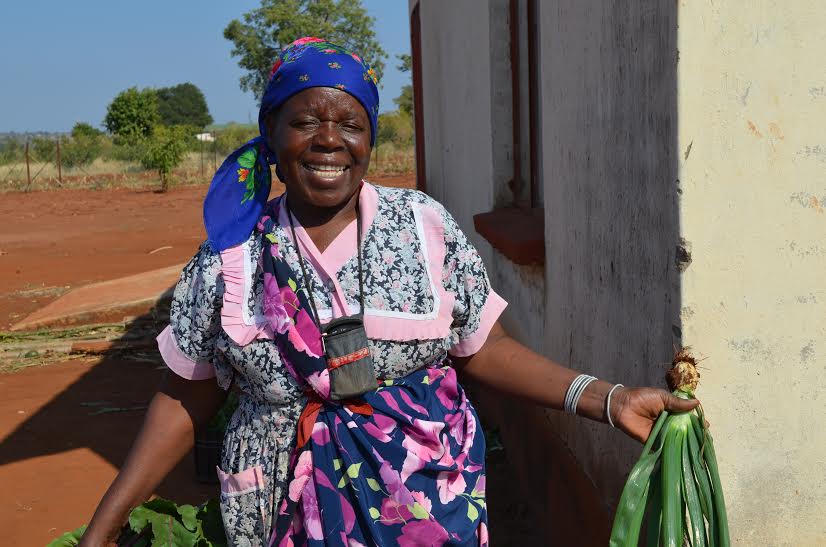The people of Jopi village feel like canaries in a coal mine. The local metaphor features a snail collecting ashes. When I visited Jopi during the severe Southern African drought of 2014-2016, vegetable farmer Daina M told me that home food gardens in the village had produced “nothing, nothing at all” during the growing seasons. Scant rain came too late for the maize and groundnuts that are staples of the local diet.

Mhani (Mother) Daina and her neighbours, like the people in East Africa currently facing drought and famine, are daily living the consequences of the world’s addiction to growth and the resistance of powerful politicians and corporations to meaningful action on climate change. In Jopi village the extreme El Niño of 2015-16, combined with human-induced climate change, brought blistering heat and worsening drought. It is not a one-off event. In the brief six years I’ve been doing research in Jopi, farmers have described more frequent drought, more capricious rains (arriving later in the rainy season; arriving in sudden floods that wash away seeds; not arriving at all), and dry river beds. On a national level major reservoirs and other surface water resources are dangerously depleted, causing community-level shortages that fuel outrage and instability. Beyond the numbing statistics – tens of millions of Africans facing impoverishment and hunger as droughts undermine agriculture first in Southern Africa, now in East Africa and Nigeria – what does climate change mean in people’s daily lives?
In Jopi it means precarious access to water. Mhani Daina can’t afford her own well, so her household relies on the municipal water supply. Water is supposed to run through those pipes twice a week. Women, often spelled off by children or grandchildren, line up dutifully on the appointed days. Some have as many as fifteen or twenty plastic containers to fill (they use 20-30 litres per person per day: Canadians use ten times that). On a good day, when the water actually flows, it can trickle so slowly that people spend more than an hour filling their cans – after queuing. This is time that can’t be spent studying, playing, or working for pay.

There haven’t been many good days lately. Failed rains mean ground-water supplies and reservoirs are not replenished, and rural poverty and poor government planning exacerbate the effects of drought. Mhani Daina used to rely on her neighbour’s well for a back-up supply, but now there is barely enough for that family’s use. Household use includes cooking, drinking, and bathing; home gardens rely on rain.
Heat is the other challenge. When I’m in Jopi, usually in the Southern winter, Mhani Daina and fellow farmers at the women’s cooperative vegetable farm complain that “you can’t even tell it’s winter anymore”: temperatures regularly soar into the thirties under the winter sun. While much of the world worries about the dire effects of a two-degree rise in global temperature, inland regions of Southern Africa can expect a five-degree rise by 2050 unless global greenhouse gas emissions are reduced dramatically. High temperatures are wreaking havoc already. Pests that used to die off in cooler weather now flourish year round. Pumpkin leaves, a favourite local green, are shrivelled and unmarketable within an hour of watering. Indigenous plants provide useful alternatives in dry years but they too are susceptible to pests, and to invasive species. People who can little afford it are forced to turn to less nutritious store-bought food.
Mhani Daina and her co-workers find hope at their farm. They founded the vegetable project in another legendary drought period, 1992. “The farm chased kwashi from our village,” says farmer Mamayila M, referring to kwashiorkor and other forms of malnutrition. For twenty-five years, using water-conserving drip irrigation fed by a productive groundwater well, these farmers have been providing nutritious, reliable, and affordable food to people from Jopi and neighbouring villages. They grow “exotics” including tomatoes, onions, three varieties of spinach, sweet potatoes, green beans, and butternut squash following largely agro-ecological practices.[i] The women are intensely proud of their contribution to the community. Alice K says local children are “fresh” as a result of the farm’s vegetables. Florah M laments the poor nutrition in cheap store-bought food. “Even a five-year-old child can be old from eating that food,” she says.

Extension workers from the provincial agriculture ministry teach conventional growing methods, but the women generally can’t afford chemical fertilizers and pesticides. They adopt agro-ecological methods of necessity. They work to rebuild the soil with organic material, nourish their crops with chicken manure tea, and — in an early adaptation to climate change — have given up on pest-prone plants like cabbage. Cabbage is a favourite vegetable in the region, but the women of Jopi have helped the community cultivate a taste for spinach, which is both more nutritious and less attractive to pests.
In the context of climate change, this kind of sustainable local initiative is crucial – not just for people’s health, but for broader food security. Healthy local food systems support community development, providing food and jobs where people live. A growing body of research shows that agro-ecological methods produce food systems more resilient to the effects of climate change than conventional agriculture. For instance, soils rich in organic material are better able to retain moisture and less prone to wind erosion; decomposing organic matter feeds the soil far more sustainably than fossil fuel-based fertilisers; and encouraging growth of indigenous edibles among commercial crops helps protect biodiversity.
The consequences of climate change become less theoretical with every failed rainy season (or here in Canada, with unprecedented fire seasons, devastating floods, and year after year of record-breaking temperatures). People who are poor — living in areas particularly vulnerable to extremes, often without adequate housing or clean water, and susceptible to disease — are hardest hit. Farmers living in such areas are adapting and innovating as best they can. Those of us privileged to be insulated from these pressures need to make sure our actions support, rather than undermine, their efforts.
Review of film in South Africa’s Solidarity Economy News
Sources include –
[i] Olivier de Schutter, “The Transformative Potential of the Right to Food,” Final Report of the UN Special Rapporteur on the Right to Food, Jan. 2014; Laura Silici, “Agroecology: What it is and what it has to offer,” IIED (International Institute for Environment and Development) Issue Paper June 2014.
www.climatesignals.org/scientific-reports/explaining-extreme-events-2015-climate-perspective
www.climatesignals.org/headlines/events/southern-africa-drought-2015.




